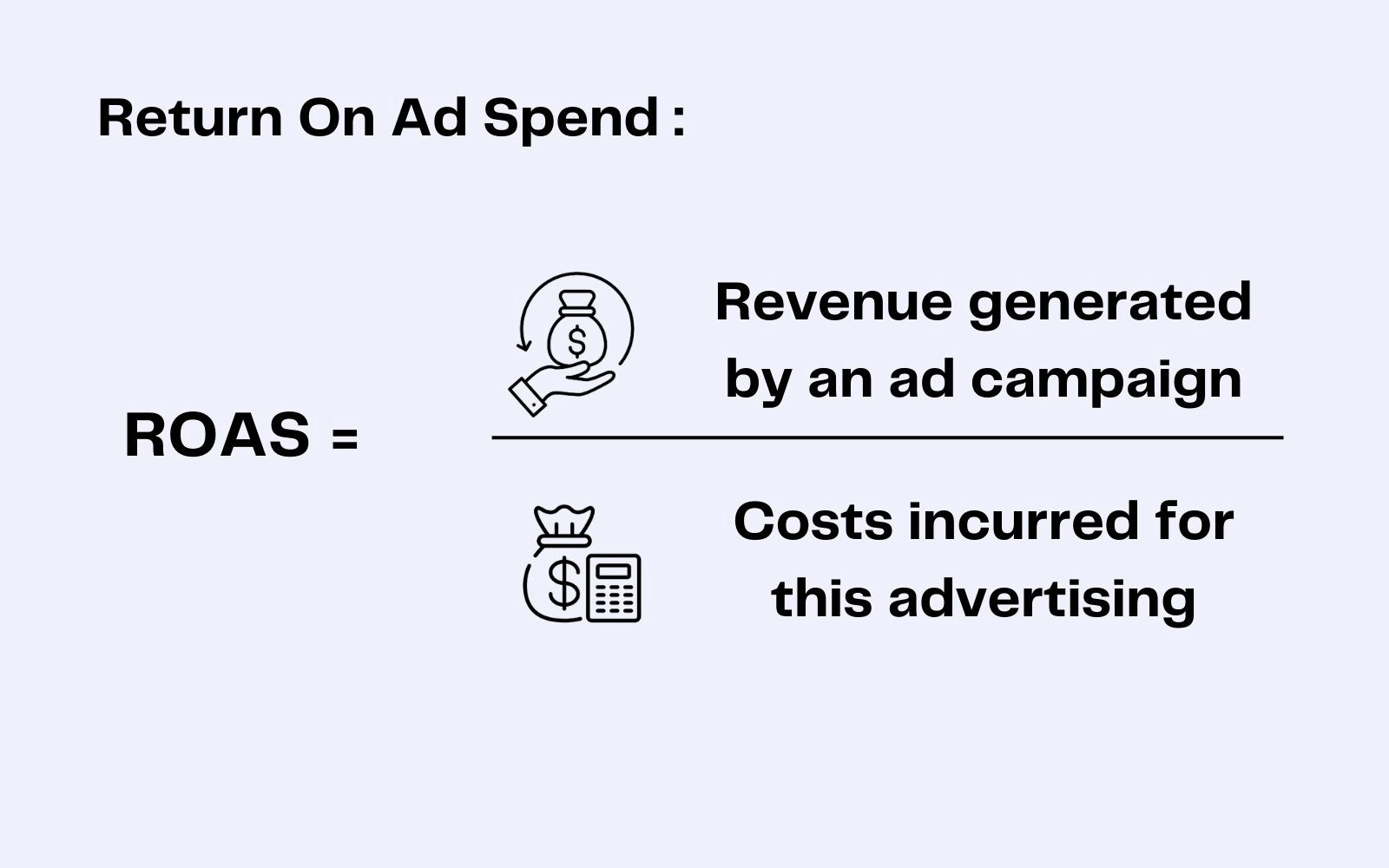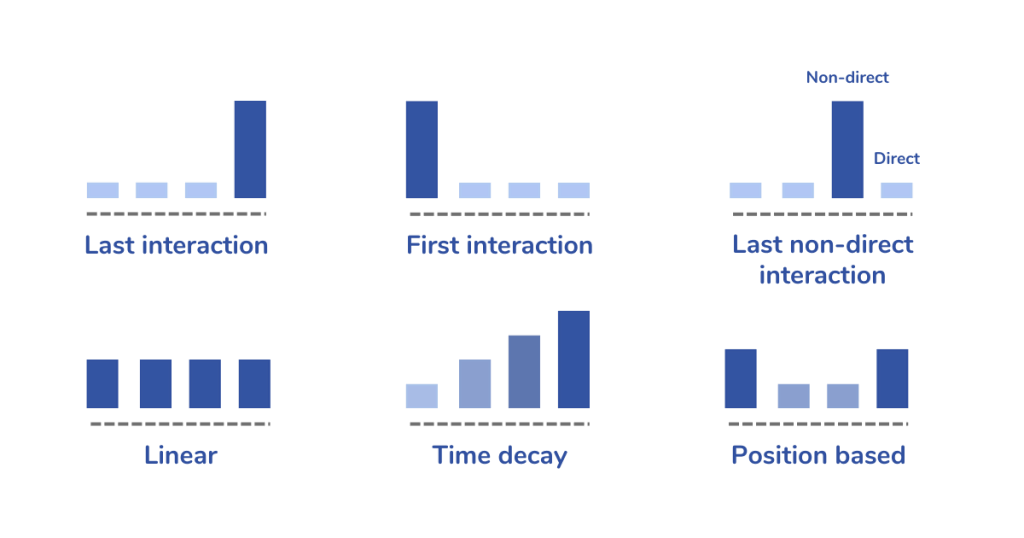
What is ROAS (Return On Ad Spend)? Definition and best practice
7min • Last updated on Mar 20, 2025

Olivier Renard
Content & SEO Manager
According to Tinuiti's Digital Ads Benchmark report, the cost per click (CPC) for Google Search ads rose by 7% in the last quarter of 2024 compared with Q4 of the previous year.
This is part of a continuing upward trend, following a 9% increase in 2023. Some sectors, such as retail, have even seen increases of over 40% over a 5-year period.
This significant inflation in CPC makes optimising advertising spend more crucial than ever. In this context, ROAS (Return On Ad Spend) is an essential KPI for assessing the performance of your digital advertising.
Key facts:
ROAS measures the effectiveness of advertising investments by comparing the revenue generated with the expenditure incurred.
A high figure reflects effective campaigns, but it must be interpreted according to the objectives and the sector of activity.
It differs from ROI (Return on Investment): ROAS focuses on advertising performance, whereas ROI assesses profitability.
Improving ROAS means refining targeting, reducing costs and optimising landing pages. A composable CDP increases your sales thanks to first-party data and precise segmentation.
👉 Find out what ROAS is, how it's calculated and how it differs from other KPIs. Find out our practical tips for optimising your advertising campaigns and maximising your performance. 🎯
ROAS, or Return On Ad Spend, is a key performance indicator that measures the effectiveness of advertising campaigns. It is expressed as a ratio between the revenue generated by a campaign and the expenditure incurred on it.
This indicator plays an important role in digital marketing. It allows you to quickly assess whether a campaign (Google, Meta or TikTok Ads, for example) has generated activity and sales.
Unlike ROI, which takes account of overall costs and therefore margins, ROAS focuses on the performance of advertising investments. It's an easy statistic to monitor.
By monitoring this ratio, companies can better allocate their budgets to reach their targets. This optimises results and improves profitability.
Why is it important to calculate ROAS?
Before the explosion of the web, it was complicated to accurately measure the revenue generated by an advertisement. Unlike traditional channels, digital marketing offers precise performance measurement.
ROAS enables marketers to quickly identify which advertising strategies are working. It helps to identify the most profitable campaigns and avoid unnecessary expenditure.
In a context where the cost per click (CPC) continues to rise, this indicator becomes a precious ally when it comes to planning marketing investments. A high ROAS can indicate efficient use of resources, while a low ratio means that adjustments are necessary.
How do you calculate ROAS?
ROAS, or Return On Ad Spend, is simply calculated using this formula:
ROAS = Revenue generated by a campaign / Expenditure incurred for this advertising

ROAS Calculation
This ratio indicates how many pounds in sales were generated for each pound spent on advertising. A ROAS of 4:1, or 400% if expressed as a rate, means that every £ invested has yielded four £ in revenue.
Practical examples to understand the calculation
Let's take an example.
A company spends £1,000 on a Facebook Ads campaign and generates £5,000 in sales.
The calculation is very simple:
ROAS = 5000 / 1000 = 5
This means that the campaign has generated £5 in sales for every pound sterling invested.
Elements to be included in the calculation
For a reliable ROAS, it is important to clearly define the costs taken into account for the campaign:
Direct costs :
Advertising expenditure: Amounts invested on advertising platforms (Google Ads, Facebook Ads, etc.), including bid costs.
Partners‘ or affiliates’ costs: Commissions paid for displaying or placing ads.
Indirect costs :
Creative production costs: Creation of advertising content, such as visuals, videos or texts.
Operating costs: Cost of in-house teams or agency fees for managing campaigns.
Marketing attribution is an important factor in determining what proportion of sales is allocated to each channel.
There are several methods for distributing the credit for the revenue generated between different contact points:
Last-click attribution (credit to the last point of contact)
First-click attribution
Linear attribution model (equal distribution between all channels)
Time decay attribution model (contact points closest to conversion receive more credit)

Examples of marketing attribution models
With an increasingly complex customer journey, the methodology you use will have an impact on your calculations.
Let's say a customer sees an advert on Instagram, clicks on a Google ad and completes their purchase via a newsletter. With last-click attribution, only the email marketing gets credit for the conversion, whereas the Instagram and Google ads helped to influence the purchase decision.
ROAS, ROI and CPA: what are the differences?
ROAS, ROI and CPA are three essential KPIs for analysing marketing performance. Here are the differences between them and how they are used.
Criteria | ROAS | ROI | CPA |
|---|---|---|---|
Definition | Revenue generated per pound sterling spent | Overall return on an investment | Cost of acquiring a customer |
Main objective | Measure advertising effectiveness | Evaluate overall profitability | Evaluate the cost per conversion |
Calculation formula | Advertising revenue / Expenditure | (Revenues - Costs) / Costs x 100 | Total cost / Number of conversions |
Type of data | Advertising revenue, costs | Revenues, direct and indirect costs | Advertising expenditure, conversions |
Use cases | Analysis of advertising campaigns | Overall profitability analysis | Conversion-oriented campaigns (e.g. SaaS, e-commerce, etc.) |
Benefits | Specific to advertising | Global view of performance | Targets performance at customer level |
Limitations | Does not take all costs into account, varies according to attribution model | Not limited to advertising | Does not take into account sales generated |
The differences between ROAS, ROI and CPA
How should ROAS be interpreted?
What is a good ROAS?
There is no universally ‘good’ ROAS, as it all depends on the sector of activity and the objectives set. In general, a ROAS of around 4:1 is often considered to be good. This means that every pound spent on advertising yields £4 in revenue.
Expectations vary according to platform and industry:
In e-commerce, the aim is to maximise sales per product. The average ROAS is around 3:1 (source: Admetrics) and varies enormously from one advertising network to another.
Google Ads makes it possible to set bids with target ROAS, an effective technique that requires a lot of data and expertise.
The SaaS model is based on high initial acquisition costs, offset by recurring revenue (subscriptions).
ROAS varies according to the maturity of the business. For a start-up looking to establish its brand and increase customer acquisition, a 2:1 ratio is acceptable.
Mobile advertising: Applications generally aim for high ROAS to make their advertising spend profitable and acquire new users.
It's also important to take into account the Break-even ROAS, which indicates the minimum break-even point to be reached. Once this threshold is exceeded, your campaigns begin to be profitable. Below this threshold, your campaigns start to lose money.
What does a low ROAS mean?
A low ROAS means that your campaigns are generating less revenue than expected in relation to your advertising spend. This can indicate a number of problems:
Ineffective targeting: Your ads may be reaching an irrelevant audience.
Advertising costs too high: Bids and advertising costs exceed the value generated.
Underperforming landing pages: Poor user experience can slow conversions.
Poorly engaging creative: Visuals or messages don't grab enough attention.
Analyse the performance of each element of your campaigns: targeting, the platforms used and the effectiveness of the content. Small adjustments can sometimes have a significant impact on your results.
Strategies to improve your ROAS
Optimising your advertising budget
The first step to improving your ROAS is to better manage your advertising spend. Analyse your current campaigns to identify those that are consuming a large budget without any significant results.
Adjust your bids to concentrate efforts on the most profitable keywords and audiences.
Improve landing pages
A high-performing landing page is essential for converting clicks into sales. Make sure it loads quickly, is mobile-friendly and offers clear navigation.
Relevant content, visible calls to action and simplified forms increase the chances of conversion. A better user experience also reduces the bounce rate, which improves both your advertising performance and your SEO.
Target more precise audiences
Precise targeting considerably increases your ROAS. Use behavioural, transactional and demographic data to segment your audiences. Prioritise the segments with the highest purchase intent.
A Customer Data Platform (CDP) uses this data to identify the most relevant audiences. Thanks to its predictive attributes powered by AI, the DinMo composable CDP facilitates this segmentation by drawing on the data in your data warehouse.
A/B testing and ongoing analysis of your campaigns
To maximise your ROAS, it's essential to test your campaigns regularly. Set up A/B tests on advertising formats, messages or visuals to identify what works best.
Analyse the performance of your ads in detail, using advertising platforms or tools such as Google Analytics.
Conclusion
ROAS is a key indicator for measuring and optimising the profitability of your advertising campaigns. By closely monitoring your performance and adjusting your strategies, you can maximise your revenues while keeping your costs under control.
👉 Find out how DinMo can help you better leverage your data to increase revenue and customer lifetime value (LTV). 🚀
















